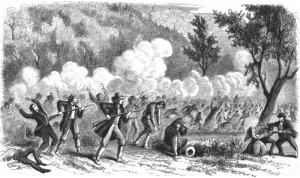 An anonymous author* writing at the MorningStar Post blog “had an awful time putting [a] story together” on “the number of Latter Day Saints [sic] that are actually considered active,” and that Mormons are, per the title of the post, allegedly “leaving their religion in record numbers around the world.” (Link) What is the cause of this dire situation for the Church, and why was it so awful for the author to write on it? According to the article, which quotes an unnamed “high-ranking leader in Salt Lake City,” it is because “of unprecedented scrutiny of our doctrines and beliefs and stemming from the white washing of our own history, and the rise of social media sites where members and potential converts can learn of our hidden problems.”
An anonymous author* writing at the MorningStar Post blog “had an awful time putting [a] story together” on “the number of Latter Day Saints [sic] that are actually considered active,” and that Mormons are, per the title of the post, allegedly “leaving their religion in record numbers around the world.” (Link) What is the cause of this dire situation for the Church, and why was it so awful for the author to write on it? According to the article, which quotes an unnamed “high-ranking leader in Salt Lake City,” it is because “of unprecedented scrutiny of our doctrines and beliefs and stemming from the white washing of our own history, and the rise of social media sites where members and potential converts can learn of our hidden problems.”
This claim has been made before on many websites critical of The Church of Jesus Christ of Latter-day Saints. It is a common trope for critics to say that the Church is nearing extinction because of the supposedly damning real history of Mormonism it has been hiding from its unsuspecting members. Instead of revisiting these claims in general, I want to focus specifically on the content of the blog post published by the MorningStar Post. To put it bluntly, and very charitably, the article is highly problematic. The author’s use of anonymous sources is extremely questionable, and both factual errors and blatant plagiarism also plague the article. In short, the article makes totally dubious and unsubstantiated claims about both LDS Church hierarchy and Mormon history. [Read more…] about Putting Together an Awful Story
 Prior to graduating from BYU,
Prior to graduating from BYU, 


 Royal Skousen is a professor of linguistics and English at Brigham Young University. He is considered to be a leading expert on the textual history of the Book of Mormon.
Royal Skousen is a professor of linguistics and English at Brigham Young University. He is considered to be a leading expert on the textual history of the Book of Mormon.